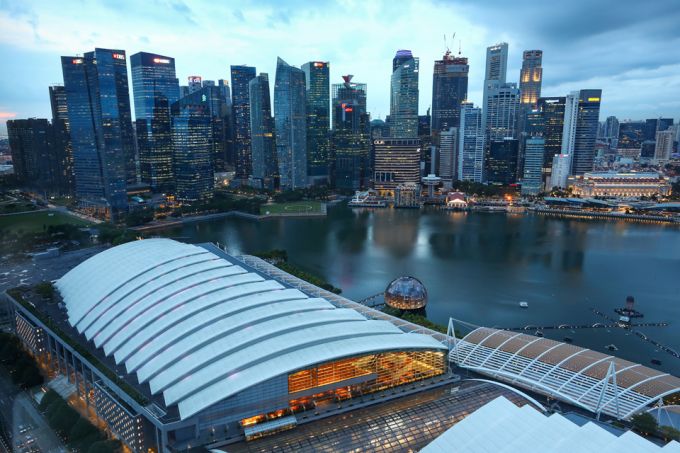CUSHMAN & Wakefield is projecting rents in Singapore’s central business district (CBD) to land at S$9.54 per square foot (psf) per month by the end of 2020, down 10 per cent from 2019’s peak of S$10.66 psf per month, it said in a report on Thursday.
Emerging vacancy in the market placed a downward pressure on Grade A office rents, CBRE said in a separate report on the same day.
In the fourth quarter of 2020, Grade A office rents corrected for its fourth consecutive quarter, declining at 2.8 per cent quarter on quarter to S$10.40 per square foot per month.
This represented a full year decline of 10 per cent in Grade A office rents, which reversed the rental growth of 6.9 per cent in 2019, CBRE’s report noted.
On the other hand, rents in the city fringe and suburban offices are showing less of a decline compared to the CBD, said Cushman & Wakefield.
Rents in these segments fell only by 1.5 per cent and 1.6 per cent respectively across all grades in the year to date period between the first quarter and the third quarter of 2020, compared to CBD Grade A office rents which dropped by 7.7 per cent.
Falling CBD rents may lead to some degree of flight to quality, particularly for firms that are recording growth, Cushman & Wakefield said. However, by and large, companies will resist capital expenditure, it noted.
Mark Lampard, Cushman & Wakefield’s executive director and head of commercial leasing in Singapore, said companies based in the fringe or suburban markets have less room to impact their bottom line as rentals in these markets are lower. He added that co-working will therefore remain very relevant as it provides much-needed flexibility for tenants in this climate of uncertainty.
Meanwhile, CBRE said leasing activity in 2020 was primarily driven by renewals and relocations, with a reduction in overall footprint.
In the first three quarters of 2020, this amounted to a negative net absorption of -545,000 square feet (sq ft). Based on preliminary leasing data, 2020 year-to-date leasing volume was about 1.18 million sq ft.
CBRE co-head of office services David McKellar said firms in the technology and financial services sectors were the top two demand drivers – contributing to more than half of leasing volume in 2020.
While the cutback in large occupiers’ footprint has resulted in an increase in secondary space, this also presented more quality, fitted-out options for other tenants, Mr McKellar said.
“We also observed that given the heightened uncertainties in the market, incoming tenants are open to taking over fitted premises as it reduces the need for additional capital expenditure,” he added.
Looking forward, Cushman & Wakefield expects CBD rents to continue their decline in 2021. The fall comes as companies start negotiating for shorter leases, convinced that increased flexibility from a prolonged period of work from home will translate to a reduction in real estate footprint needs, it said.
Demand for the city fringe and suburban markets is expected to remain healthy as the pandemic has forced many firms to consider secondary office locations as part of business continuity planning.
Cushman & Wakefield head of research for Singapore and South-east Asia Christine Li said: “Planning contingencies for secure secondary office locations has become a priority for many corporates and this trend will feed demand for city fringe and suburban locations, including business parks.”
The development of the Central Boulevard site in 2021 will inject 1.3 million sq ft of new supply in the CBD market and may put further pressure on rents. Nevertheless, the prospects for demand “remain bright” as Singapore continues to attract a sizeable pool of blue chip corporates, particularly among pharma, biomedical, technology and its related suite of service providers, Cushman & Wakefield added.
By Vivienne, The Business Times/ 18-Dec-20

